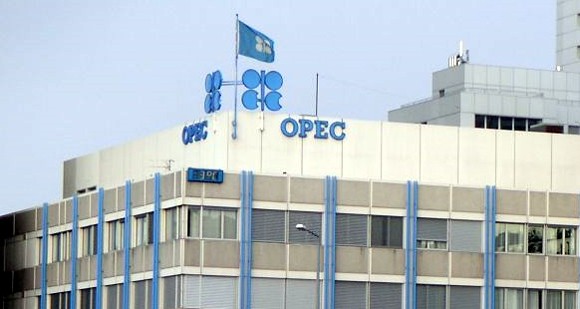Oil's slide below $100 a barrel on Monday brings prices closer to levels where more OPEC countries face financial worries, prompting some in the producer group to voice concern about too much oil in the market.
Brent crude fell below $100 a barrel for the first time in 14 months, hit by concerns about slower economic growth and ample supply. Top OPEC exporter Saudi Arabia favors oil at $100, which many others in the 12-member group also support, Reuters reported Tuesday.
For now, Organization of the Petroleum Exporting Countries delegates said on Monday they were not alarmed, expecting winter demand to support prices. But still, signs of concern are emerging about the level of supplies.
"As with concern about the drop in oil prices it was a result of weak demand and oversupply mainly from the US, recovery in Libya, Nigeria and Iran," said an OPEC delegate.
"But the geopolitics is there and cold weather is approaching, which will support prices," the delegate added.
The US shale oil boom is inflating global supplies. Within OPEC, Libyan output has risen and Iraqi exports have mostly continued flowing despite conflicts in those countries, while output has edged up in Nigeria and Iran.
Another OPEC delegate said prices were under pressure from too much oil, something some member countries were watching. However most OPEC officials contacted by Reuters continued to see the price drop as short-lived.
"The fall in prices is a temporary thing. They are still within the acceptable range. There is no real worry," said a delegate from one of OPEC's Persian Gulf members.
OPEC does not have a official price target and prices still need to fall further to be outside an acceptable zone cited by Saudi Oil Minister Ali al-Naimi in June, when he said oil at "$100, $110, $95 is a good price."
Estimates from the International Monetary Fund indicate that while current prices are comfortable for OPEC 's core Persian Gulf members, they are below levels for members including Iran, Algeria and Iraq need in 2014 for their fiscal balance to be zero.
The group has a nominal target to produce 30 million barrels per day and in August, pumped more than that level, according to a Reuters survey, due in part to a rise in Libya. OPEC is not scheduled to meet to review its output policy until late November.
Still, Saudi Arabia, Kuwait and the UAE could trim supply informally such as to make room for a further recovery in Libya, an OPEC source said in August, although no evidence of this happening has come to light.
One analyst did not see current prices as putting OPEC countries' budgets under strain and did not expect to see any unilateral export cuts by Saudi Arabia, given that Riyadh reduced its official selling prices (OSPs) for crude last week.
"I am not sure it is really a line in the sand. At $90 to $100 a barrel it will be fine, but if you go down to $75 it's another issue," said Olivier Jakob, analyst at Petromatrix.
"What Saudi Arabia did with the OSPs is significant. I take it as a sign that they want to keep market share and are not planning to cut exports."
Persian Gulf Arab oil ministers gather on Thursday for an annual meeting and while this typically does not include discussions on output targets, they may take the opportunity to comment on price levels.


